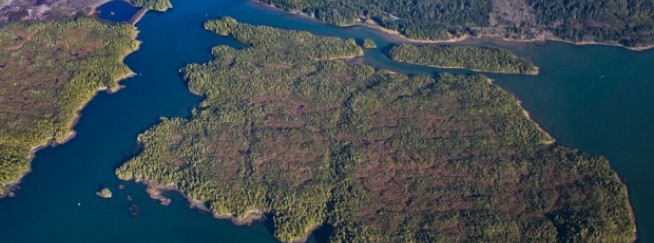LETTER - More to the LNG story
Source: Bowen Island Undercurrent
Date: March 20, 2015
Dear Editor,
Having grown up in North Vancouver in the 1960’s and 70’s and having travelled frequently up to Whistler to ski (yes, it was actually affordable back then), I remember passing through the man-made fog in Howe Sound as the pulp mill at Woodfibre belched out its clouds of white smoke with that very distinct odour. It is thus with interest that I note the evolution of the Woodfibre site from pulp mill to the planned location of a natural gas liquefaction facility; a Liquefied Natural Gas (LNG) plant that will contribute to reducing carbon and other emissions with its product while having a green footprint by taking its power generation requirements off an existing electrical power grid and receiving its supply of natural gas through proximate existing pipelines. If industry and its associated opportunities for employment were going to continue to grow in the beautiful setting of Howe Sound, I could think of few better outcomes. In the past year there has been much in the media about the plans to build LNG plants on the West Coast with as many as 18 projects being proposed to date.
There is, however, more to the LNG story in British Columbia (BC) than the construction of LNG plants and that is the increasing importance and use of LNG in transportation and other applications. As the BC Ferries Corporation has realized, there are significant cost savings to be achieved by switching from expensive ultra-low sulphur content diesel fuel as marine short sea shipping operators grapple with stricter rules coming into effect for designated emission control areas in 2015 under the International Convention for the Prevention of Pollution from ships (MARPOL), which covers exhaust air emissions of Sulphur Oxides (SOx), Nitrogen Oxide (NOx) and particulate matter for ships plying the waters off the coasts of Canada and the United States. The three new Intermediate Class ferries coming into service, commencing in 2016, will be powered by dual fuel engines (LNG and diesel) and the two large Spirit Class vessels will be converted in 2016 and 2017 to be powered by dual fuel engines to allow the predominance of the operations of these vessels to occur on the consumption of LNG.
BC Ferries expects total savings from using LNG in propelling these five vessels to be approximately $12.0 million per year, based on current fuel price estimates, as LNG is approximately 50 percent cheaper than marine diesel fuel. With much of the existing BC Ferries fleet due to be either replaced by new vessels or significantly upgraded over the next two decades, I would not be surprised to see much of the fleet moving to LNG fuelled propulsion.
It is not only BC Ferries that recognizes the combined benefits of using LNG as a marine fuel in terms of cost reductions and conforming to evolving environmental legislation in the marine sector. Washington State Ferries (WSF) is in the process of doing seeking legislative approval and funding to retrofit its six Issaquah Class ferries with new engines to use LNG as a source of fuel. The WSF Air Emissions Modeling (to be found on the Washington State Department of Transportation website) predicts the conversion to LNG will lead to exhaust air emissions reductions of: 59 percent in sulphur dioxide; 61 percent in nitrous oxide; 89 percent in particulate matter; and 28 percent in carbon dioxide.
In November 2014, Seaspan Ferries announced the build of two dual fuel LNG powered rail ferries. Totem Ocean Trailer Express (TOTE), a US marine carrier whose ships regularly ply the waters off the BC coastline, is converting its fleet to LNG propulsion. It is only a matter of time before tug and barge operations and other local shipping operators follow suit. Converting to LNG as a marine fuel is taking off in other places such as Singapore and Europe and as those vessels come to Canadian and US ports there will be a need to fuel them. LNG is not only limited to the marine sector but is also finding increased use in high horsepower applications in trucking, rail transport, mining, and in oil & gas operations. All of this will drive an ever-increasing LNG oriented infrastructure in BC, whether or not the proposed LNG export facilities come to fruition.
Sincerely,
Alex Rueben
Executive Director
Industrial Marine Training and Applied Research Centre (IMTARC)



Site design by Ravensfoot